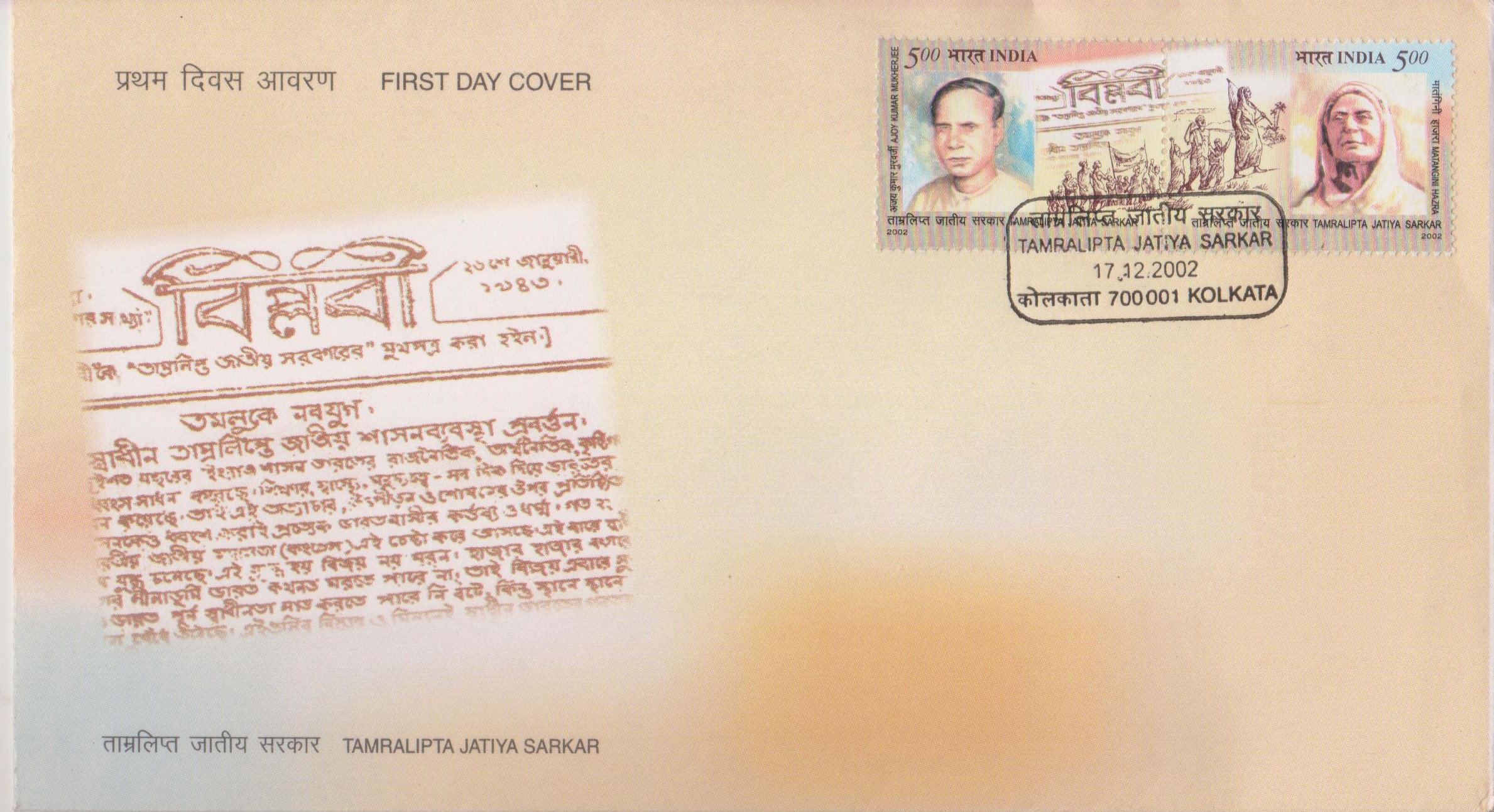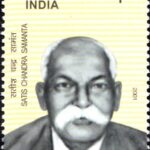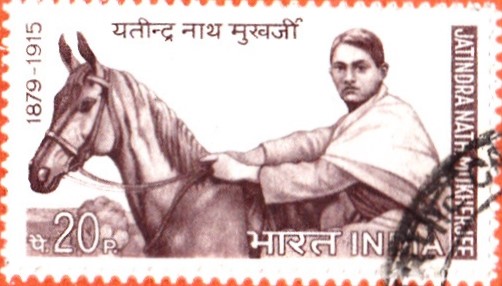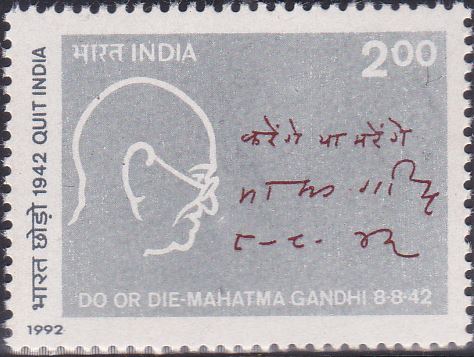
Tamralipta Jatiya Sarkar : Ajoy Kumar Mukherjee & Matangini Hazra
Complete Set of 2 nos of postage stamps on Tamralipta National Government : Ajoy Mukherjee (4th Chief Minister of West Bengal (1967, 1969-70)) and Matangini Hazra (Gandhi Buri (Old Lady Gandhi)) :
 Issued by India
Issued by India
Issued on Dec 17, 2002
Issued for : The Department of Posts is happy to honour Ajoy Kumar Mukherjee and Matangini Hazra with the issue of these commemorative postage stamps, in a setenant.
Design : The design, apart from portraits of the personalities, also carries images of the struggle and a picture of ‘Biplabi’, the newspaper published by the revolutionaries of Tamluk.
The First Day Cover depicts ‘Biplabi‘, the official News Letter of Tamralipta Jatiya Sarkar, of 26th January 1943, announcing the beginning of the Jatiya Sarkar’s administrative role.
Credits :
Stamps : Sankha Samanta
FDC : Binoy Verghese
Cancellation : Alka Sharma
Type : First Day Cover
Colour : Multicolour
Denomination : 500 & 500 Paise
Overall size : 7.82 x 2.90 cms.
Printing size : 7.82 x 2.90 cms.
Perforation : 13 x 13
Paper : Imported un w/m adhesive gravure coated stamp paper in sheets 50.8 x 53.5 cms.
Print quantity : 0.8 million
Number of stamps per sheet : 14 Setenant
Printing Process : Photogravure
Printer : India Security Press, Nashik
Name : Ajoy Kumar Mukherjee
Born on Apr 15, 1901 at Tamluk, Bengal Presidency, British India [now Purba Medinipur district, West Bengal]
Died on May 27, 1986 at Calcutta, India
Name : Matangini Hazra
Born on Oct 19, 1870 at Tamluk, Bengal Presidency, British India
Died on Sep 29, 1942 at Tamluk, Bengal Presidency, British India
About :
- The ‘Quit India’ Movement of 1942 was a watershed in India’s struggle for freedom. It was this movement that proclaimed in unambiguous terms that foreign domination could no longer hold sway on Indian soil. Though the struggle was suppressed, this could be done only after it became clear that the British Government would have to relinquish control over India sooner than later.
- An unique feature of the ‘Quit India’ Movement was the series of independent governments formed locally in some parts of the country, like Satara in Maharashtra, Ballia in Uttar Pradesh and Tamluk in West Bengal. Among these, the ‘Tamralipta Jatiya Sarkar’ (National Government) of Tamluk was really innovative since it set up Police Stations, Military Departments, Courts and even a system for revenue collection. The Sarkar which emerged on 17th December 1942 lasted for 21 months.
- Tamluk in Midnapur District of West Bengal had always been a centre of the freedom movement. The restive feeling of the local populace was already at a crescendo when Mahatma Gandhi gave the call of ‘Do or Die’ to mark the beginning of the ‘Quit India’ Movement in August 1942. In the uprising in Tamluk, various police stations were captured by the people and all the institutions of the colonial government were rendered ineffective. Those who played important roles in the struggle included Ajoy Kumar Mukherjee and Matangini Hazra, among others. The Sarkar continued to function till August 1944, when taking note of the changed circumstances, Mahatma Gandhi advised to wind up its activities.
- Ajoy Kumar Mukherjee was a selfless leader who devoted the early part of his life to the cause of freedom of India, and was one of the main architects of the Tamralipta Jatiya Sarkar. In post-independence India, he continued to fight for the cause of downtrodden people. He had a glorious record of electoral success in the elections to the State Assembly, which he served without interruption for nearly three decades. He was the Chief Minister of West Bengal on three occasions.
- Matangini Hazra was widowed early in life, but continued to lead life in a courageous manner. The freedom struggle and the ideals of Mahatmaji inspired her. She was an active participant of the ‘Quit India’ Movement in Tamluk, at the ripe age of 73. On 29th September 1942, she took the lead in long procession in Tamluk and advanced firmly with the national flag in her hands. A shower of bullets from the heavily armed forces of the colonial government felled her, but the national flag was flying unsullied.
- Text : Based on material furnished by the sponsors.








[…] Satish Samanta and they captured Lalbari. On 17th December 1942 A.D. Ajoy Mukherjee formed the “Tamluk Provisional National Government”. They formed an armed force called ‘Bidyut Bahaini’ and women organization ‘Bhagini […]
[…] Chandra Samanta is remembered most for his leadership of the National Government called Tamralipta Jatiya Sarkar which was formed in Tamluk in the wake of the Quit India Movement. In the face of the atrocities […]